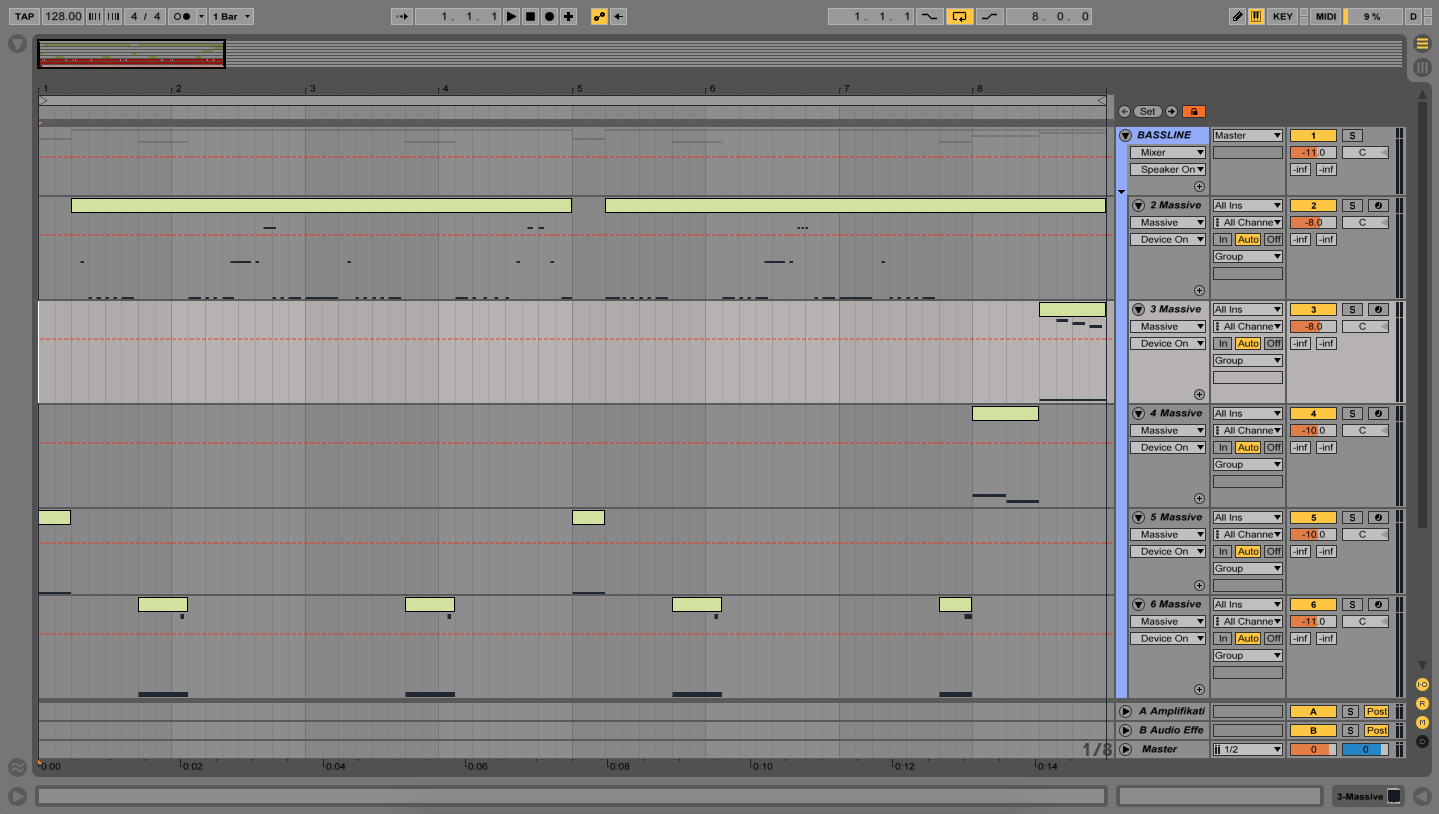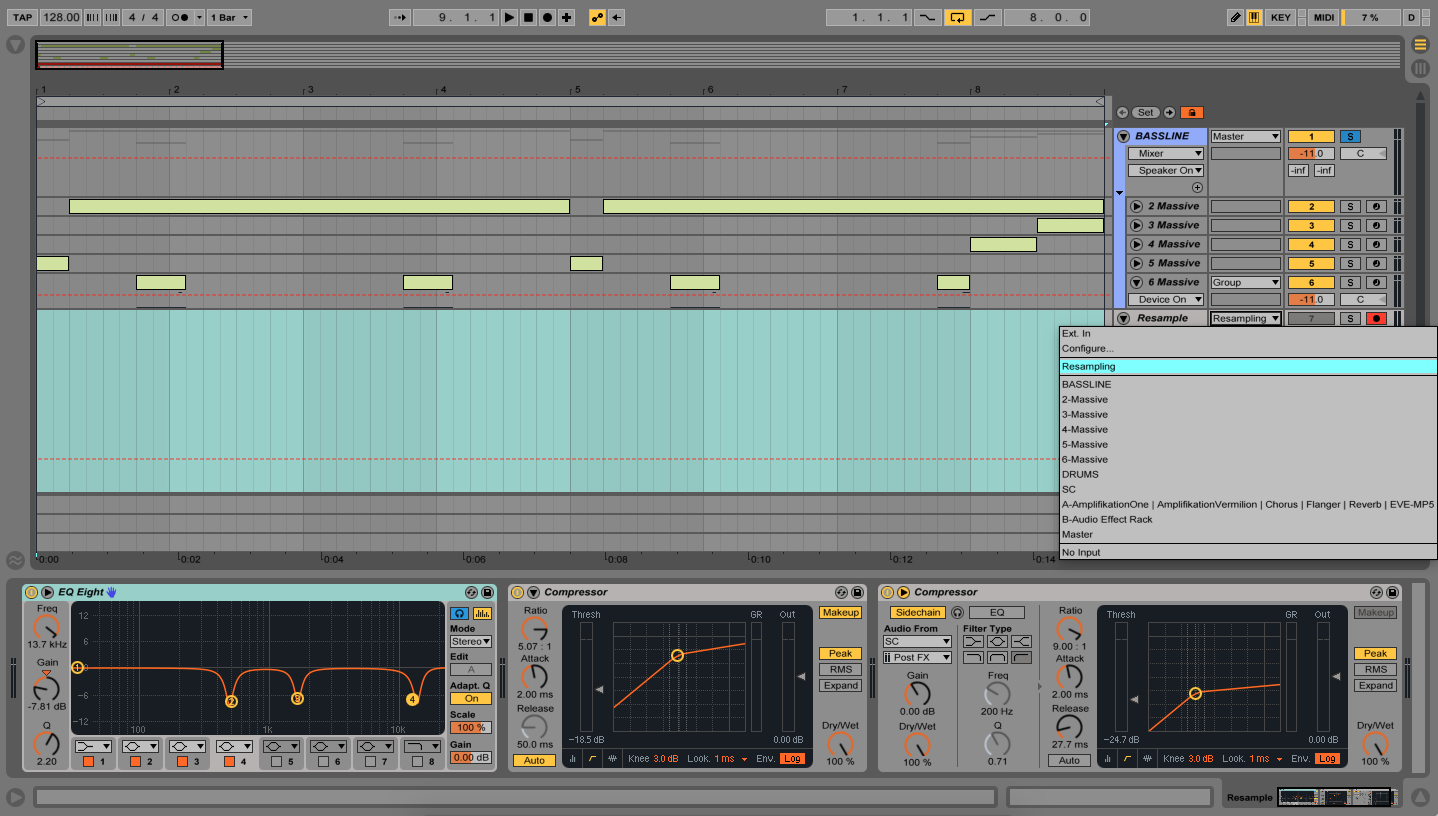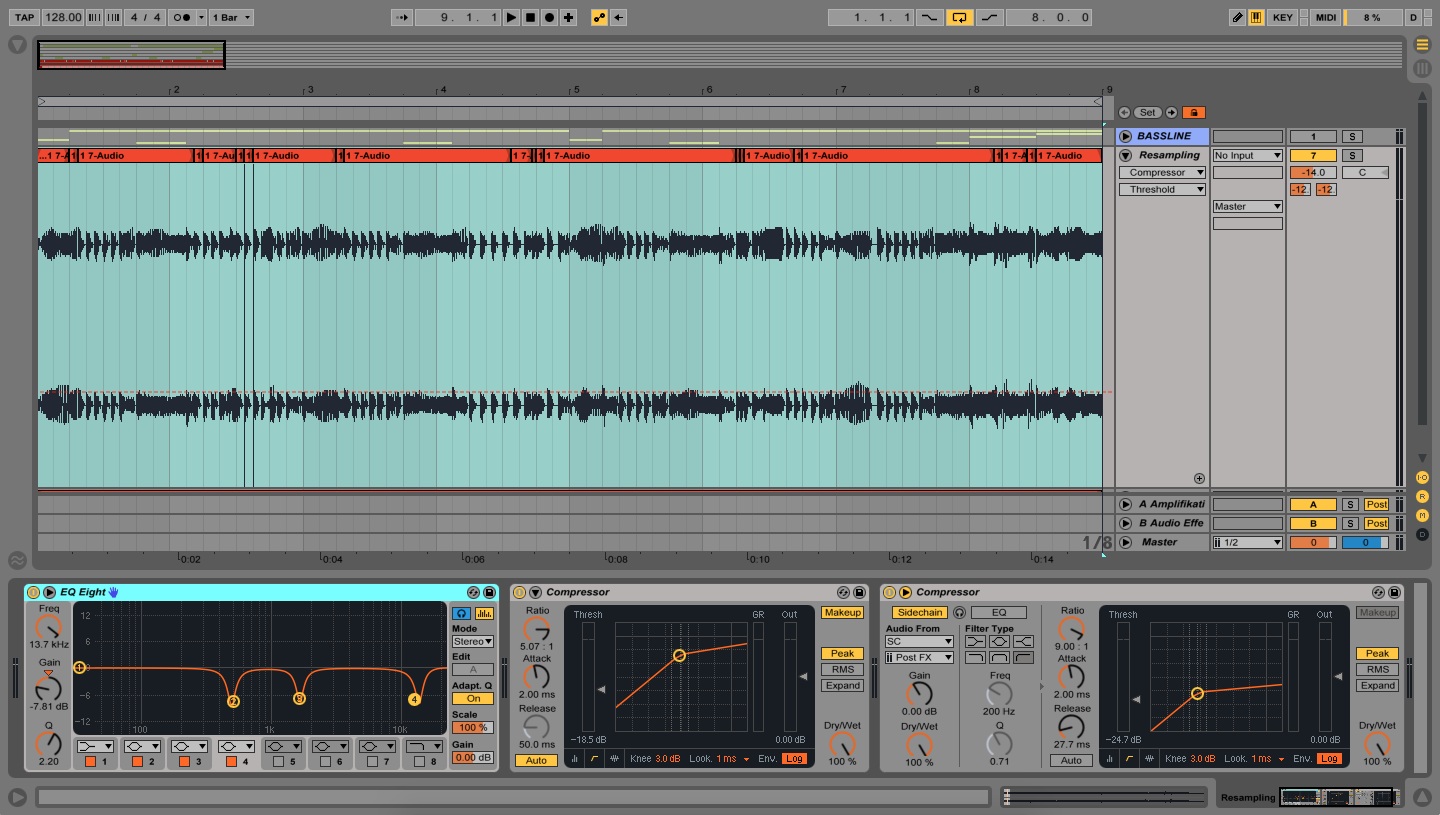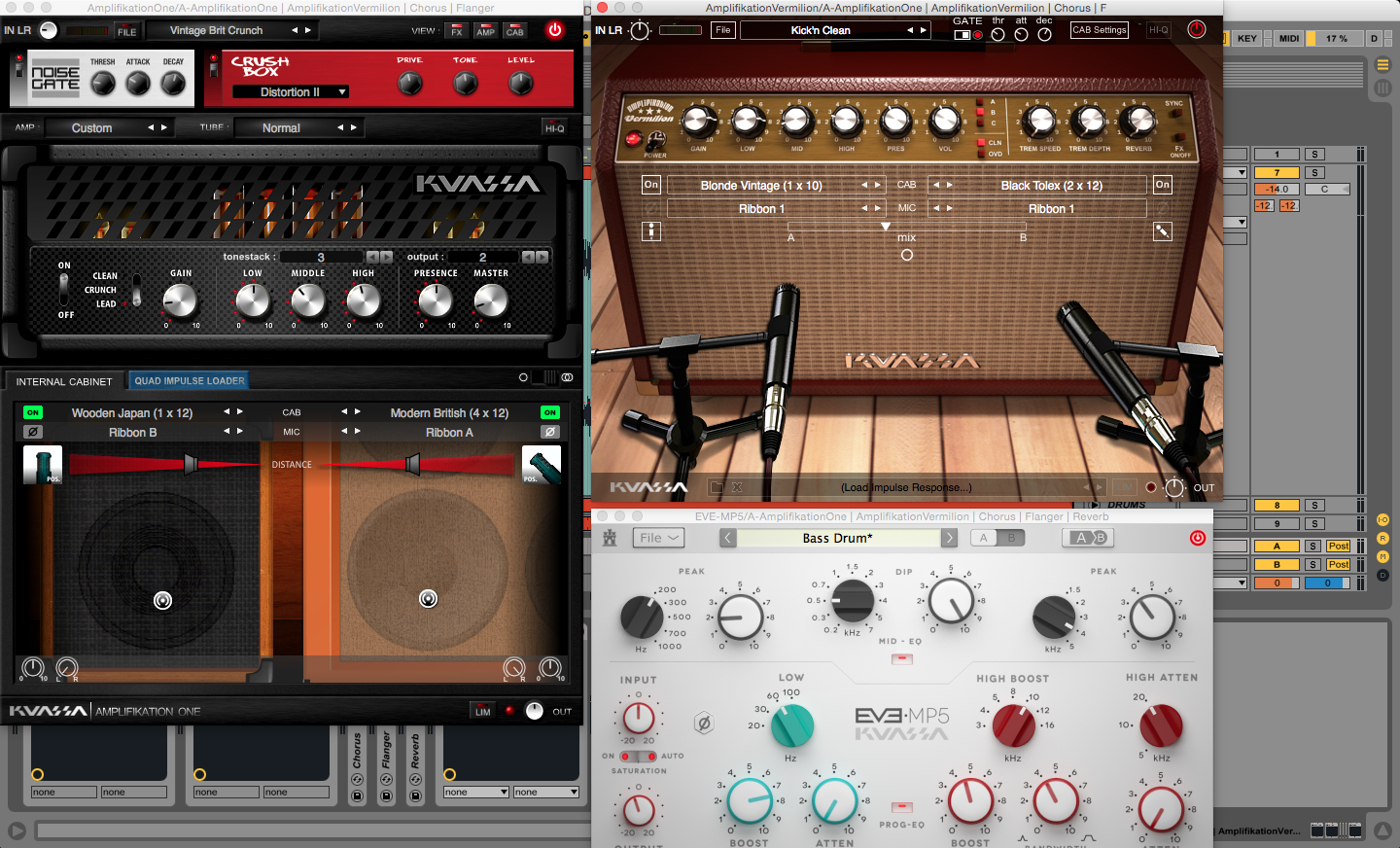In this article we explain the fundamentals of creating bassline using Kuassa’s audio plugins’ effects collection.
Even-though the most dominant part of Electronic Dance Music (EDM) is always about the beats, but basslines is also play a fundamental role in producing a danceable track. From the famous sine-square Acid House bassline to a full-blown Drum N Bass’ pure sine sub-bassy sound. Some producers, especially newbies, still forgetting this one fundamental part of electronic music element. It seems like only Drum N Bass / Jungle producers back in the 90s that were almost worshipped the importance of developing bassline sound.
Some of the popular setup of exploring bassline was routing a synthesizer’s output to a chain guitar effect input, and route its output to the mixer, and to the computer to be recorded for further process or usage. Thus, these bass-worshipping producers have hundreds and thousands of bassline soundbanks of audio plugins to be used.
Bassline in the Contemporary Electronic Music
Since 2010, when Dubstep surfaced from the deep underground culture, the term ‘Bassline’ became much more popular in the industry, in fact, the term ‘Bass’ was mentioned endlessly by the fanatic EDM enthusiasts in the social media. Wobble, Growl, Talking Bassline, Squelchy, and Neuro were some of the popular terms in the growing ‘Bass Music’ followers. All of sudden, every popular tracks were categorised as ‘Bass Music’; the Bassline culture was a big hit, then virtual instrument companies were in the race to sell the latest Bassline audio plugins to the rapidly growing market of young electronic music producers.
Some companies took easier ways and dive into the huge waves by selling tons of audio plugins of Bassline presets. At this point, technology is standardized according to what is on demand hence the Bassline exploration is not as exciting as 10 years ago anymore. We need to cross the line and hunt exciting technologies again out there!
Dirty Bassline vs. Clean Bassline – How if we use both?
Let’s begin our Bassline quest by analyzing two typical Bassline characters, the dirty and the clean. There are many ways in making your Bass sounds dirty like Noisia, Skrillex, Barely Alive, Jauz, and many more. For example, you may use preset sample audio plugins from Massive. In this industry, dirty is good but it comes with risk, one of them could backfires at you. Later in this article, we are going to tackle how to avoid it.
Secondly, the clean Bass, which does not come with too many risk but unfortunately was never the first option for some producers to step into because it does not sells as much to some listeners. But for some genres like Techno, Drum N Bass, clean Bassline is the foundation of their music composition.
But we are human, we are born greedy, let’s have them both dirty and clean and get on with the tutorial!
HERE’S HOW
In the beginning, what we are going to make is a basic Bassline suitable for any contemporary genre. In this case I would like to incorporate the audio plugins of Bass in a Complextro track. There are no background story found on the Internet of why it is called Complextro, but it does have a complex Bassline rhythms and full spectrum gritty sounds. So bare in mind that there are two things on why it is called Complextro Bassline.
 We start of with a Bass sound made inside your favorite virtual instruments audio plugins, for this tutorial I’m using Massive as a reference although you can freely replace massive with any synth audio plugin you prefer:
We start of with a Bass sound made inside your favorite virtual instruments audio plugins, for this tutorial I’m using Massive as a reference although you can freely replace massive with any synth audio plugin you prefer:
Download the Massive preset here
And it should sound like this:
Now lets build our rhythm by creating a new MIDI clip, and apply this rule: 1x 1/4 note – 4x 1/16 notes – 2x 1/8 notes – 4x 1/16 short notes (or you can download the MIDI file here ).
 Now that we have the basic rhythm going, lets get creative with the MIDI clip.
Now that we have the basic rhythm going, lets get creative with the MIDI clip.
Duplicate the main channel one track at a time, every time it has been duplicated, Massive’s parameters needs to be changed as well, even just a minor adjustment makes the difference. The above example exemplified 6-duplicated channel tracks that has been slightly attuned, added few short MIDI clips based on what we have in a basic clip. It is mandatory to group these tracks together so it makes us easier for the next few steps, which one of them is Resampling the grouped audio plugins that have been compiled in tracks into one long audio waveform for further creative editing.
There are few ways to resample your Bassline, but in this tutorial we will be focusing on a Digital Audio Workstation software Ableton Live 9.

Create an Audio Track (Ctrl + T on Windows / Cmd + T on Mac), open the scroll menu and choose Resampling, also don’t forget to hit the red [Arm Recording] button on the left of the scroll menu.
 Finally, Solo the grouped Bassline track and hit the Record button at the top and voila!, you have one long Bassline in audio waveform. Which should sounded like this:
Finally, Solo the grouped Bassline track and hit the Record button at the top and voila!, you have one long Bassline in audio waveform. Which should sounded like this:
Once you have the long waveform, this is where all the fun begins! Just randomly slice and duplicate some of the parts, because you will make no mistake on this part!
And as you noticed, good Dirty Bassline comes with consequences, one of them is bad resonating frequencies, and hence the obvious shelving on the EQ. Correspondingly, we want to adjust the gain and the power of the Bassline by adding compression to it and sidechain it using your kick drum.
Here comes the important part of the tutorial, where we send this one track a Send channel track, why? This will be explained later at the end of this tutorial. So in the Send channel (Send A in Ableton Live), we have series of Effects chain, typically Amp, Cabinet and Saturator, which can be very tricky to tweak, hurt your ears because of uncontrolled distortions, etc.


But thankfully, Kuassa makes our life much easier by just providing a well-controlled balance of amp distortion in audio plugins of their guitar amp simulator: Amplifikation One, a warm cabinet sound of Amplifikation Vermillion, and lastly, the smooth frequency saturation of EVE-MP5 to accomplish the assured clean Basslines. So all we have to do is choosing one of the provided presets that suits our Bassline character (we are using a slightly modified “Bass Drum” preset for MP5, “Vintage Brit Crunch” for Amplifikation One, and “Kick’n Clean” preset for Vermilion), minor adjustments of the built-in parameters, reduce the volume of the Send channel by -10db and DONE!
The final result is a dirty complextro bassline with extra grit, while sounded tight and controlled which should cut easily through your low-end. Hear the final result here:

